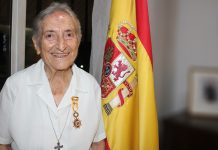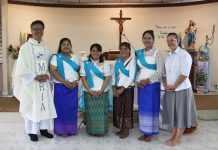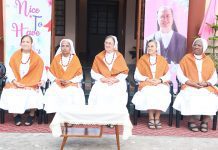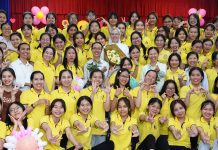Canonical Visit
In the spirit of the origins.
In the Biographical Memoirs and in the Cronistoria of the FMA Institute there are some suggestions by Don Bosco and the practice of Mother Mazzarello on the Visit to the houses that reveal the spirit with which it is realized. Download the PDF
The thought of Don Bosco
In the Biographical Memories we read: “From the heart and from the lips of Don Bosco the wisest counsels were pronounced in every circumstance, but especially in private audiences and in conferences that he held for the confreres during his frequent visits to the individual houses. […]”.
He felt the need to see his children to cheer them up and encourage them in person. His commitment was to “see everything, examine everything, and speak familiarly with everyone, superiors and students” (MB X, 1017).
Regarding the visit to the houses by the Provincials and Major Superiors, Don Bosco recommended that we always go in the name of the Superior and that the confreres should be reminded of the observance of the Rules not by virtue of ‘I want’, but by virtue of the Rules themselves.
Mother Mazzarello, Woman of encounter
Mother Mazzarello knows, through the suggestions and the example of Don Bosco, that the visits can favor communion between the sisters and the communities.
From then, as a continuously traveling pilgrim, she tries to give birth to and consolidate communities in continuous conversion, where charity is lived, in which the love of God, perceived and daily nourished, becomes the regenerative force of fraternal and apostolic life.
Her visits were lived as a time of communion, of encounter, and of joy. She made the visit with love and knew how to grasp the small gestures and needs, arriving at each one personally. She considered the visits an opportunity for direct communication with the sisters with whom she had no daily contact.
She was a peasant woman who had never left her country, and now she travels. Her travels were numerous, close together; she wanted to be in direct contact, as much as possible, with the life of her daughters.
The style of the visits recalls the environment and the relationships lived in Mornese. She listened to all the sisters with infinite patience and charity, comforted them in their sufferings, and, while respecting and supporting authority, acknowledged when the sisters were right, and prudently provided for their needs. In the visits she observed everything, nothing escaped her, and gave the sisters the counsels she considered necessary to keep alive the religious spirit of the Congregation. Although not well educated, she was full of the science of the saints, and she made very wise and useful suggestions.
She considered each visit a sign of God’s love, love accepted, given, and lived concretely in relationships with each sister, with the communities, and also outside the community environment.
(cf. Ferdinando MACCONO, Saint Mary D. Mazzarello, Founder and first Superior General of the Daughters of Mary Help of Christians II, Turin, Institute FMA 1960, 279-280).















